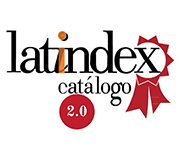La orientación al mercado como estrategia de emprendimiento en el Istmo oaxaqueño
DOI:
https://doi.org/10.20983/Novarua.2018.16.3Keywords:
Emprendedor, valor del cliente, orientación de mercadoAbstract
Los resultados de las 384 encuestas aplicadas a los consumidores de jitomate de las poblaciones de Ixtepec, Juchitán, Tehuantepec y Salina Cruz, en la región del Istmo Oaxaqueño, México, son los siguientes: en cuanto a consumidores, el 73.06 % compra jitomate Saladet; el 36.6 % compra cada dos días; el 84.87 % compra de 1 a 2 kg/semana; el 79.34 % compra el jitomate en el mercado local; el 62.73 % lo utiliza para guisar; el 54.98 % dice que la principal característica de compra que busca es su precio. En cuanto a los proveedores, los resultados de las 73 encuestas aplicadas son los siguientes: el 40 % del jitomate lo traen de Oaxaca, el 91.94 % de los consumidores compra Saladet, el 48.39 % vende más de 21 kg diarios, el 56.45 % fija el precio con base en los costos, el 59.68 % se abastece cada tercer día.
References
Álvarez, L. I., Santos, M. L. y Vázquez, R. (2000). “Análisis cultural y operativo de la orientación al mercado. Efectos moderadores en la relación om-Resultados”, Revista Española de Investigación de Marketing-Esic, Vol. 4, No. 1, pp. 7-41.
Anderson, E., Fornell, C., y Mazvancheryl, S. (2004). “Customer Satisfaction and Shareholder Value”, Journal of Marketing , 68 (4), 172-185.
Bigné, E., Vila-López, N. y Kuster-Boluda, I. (2000). “Competitive positioning and market orientation: two interrelated constructs”, European Journal of Innovation Management, Vol. 3, pp. 190-198.
Blesa, A. y Ripollés M. (2005). “Relación entre la orientación al mercado y la orientación emprendedora: su influencia en el rendimiento de la empresa”. Revista Europea de Dirección y Economía de la Empresa, Vol. 14, núm. 3.
Briggs, R. (2006). “Marketers who measure the wrong thing get faulty answers”, Journal of Advertising Research, 462-468.
Deng, S. y Dart, J. (1994). “Measuring market orientation: a multi-factor, multi-item approach”, Journal of Marketing Management, Vol. 10, pp. 725-742.
Flavián, C. y Polo, Y. (2001): “Diversidad estratégica y resultados en la distribución”, Revista de Economía Aplicada, No. 26 (IX), Otoño, pp. 29-56.
Grant, R. M. (1995). Contemporary strategy analysis: concepts, techniques, applications, Cambridge Massachusetts, US. Basil Blackwell, p. 452.
Grönroos, C. (1989). “Defining marketing: a marketoriented approach”, European Journal of Marketing, 23(1), 52-60.
Hernández, R., Fernández, C. y Baptista M. (2010). Metodología de la investigación, quinta edición, Editorial Mc Graw Hill.
Instituto Interamericano de Cooperación para la Agricultura (2010). Desarrollo de los agronegocios y la agroindustria rural en América Latina y El Caribe: Conceptos, instrumentos y casos de cooperación técnica / iica-San José, C. R. ISBN 13: 978-92-9248-193-3.
Instituto Nacional de Estadística y Geografía, inegi (2010). http://cuentame.inegi.org.mx/monografias/informacion/oax/poblacion/ (consultado en el mes de diciembre del 2012).
Jagpal, S. (2008). Fusion for profit, New York, Oxford University Press.
Kohli, A. y Jaworski, B. (1990). “Market orientation: The construct, research propositions, and managerial implications”, Journal of Marketing, Vol. 54, April, pp. 1-18.
Kohli, A., Jaworski, B. & Kumar, A. (1993). “Markor: A mesure of market orientation”. Journal of Marketing Research, Vol. 30, November, pp. 467-77.
Kumar, V., Lemon, K. y Parasuraman, A. (2006). “Managing customers for value. An overview and research agenda”, Journal of Service Research, 9 (2), 87-94.
Langerak, F., Peelen, E. y Commandeur, H. (1997). “Organizing for effective new product development”, Industrial Marketing Management, Vol. 26, pp. 281-289.
Low, D. (2005). Market orientation, performance and the market environment: a study of Australian manufacturing sme’s, anzmac 2005, Conference: Strategic Marketing and Market Orientation, University of Western Sydney, Australia. Disponible en: http://smib.vuw.ac.nz:8081/ WWW/ANZMAC2005/index.html
Marketing Science Institute (2004). Research priorities. A guide to msi research programs and procedures, Cambridge, M. A. Author.
Matsuno, K., Mentzer, J. T. & Özsomer (2002). “The effects of entrepreneurial proclivity and market orientation on business performance”, Journal of Marketing, Vol. 66, July, pp. 18-32.
Moorman, C., Deshpande, R. y Zaltman, G. (1993). “Factors affecting trust in market research relationship”, Journal of Marketing, 58, 81-101.
Morgan, R. M. y Hunt, S. D. (1994). “The commitmenttrust theory of relationship marketing”, Journal of Marketing, 58, 20-38.
Morgan, R. E. & Strong, C. A. (1998). “Market orientation and dimensions of strategic orientation”, European Journal of Marketing, 32 (11/129), 1051-1073.
Narver, J. C. y Slater, S. F. (1990). “The effect of a market orientation on business profitability”, Journal of Marketing, Vol. 54, October, pp. 20-35.
Osterwalder, A., & Pigneur, Y. (2009). Business model generation.
Pelham, A. M. y Wilson, D. T. (1996). “A longitudinal study of the impact of market structure firm structure, strategy, and market orientation culture on dimensions of small firm performance”, Journal of the Academy of Marketing Science, Vol. 24, No. 1, pp. 27-43.
Pérez, A. K. (2000). Estrategias de afrontamiento. Diccionario de acción humanitaria, España, 628 pp.
Pinstrup, A. P. (1998). “Una visión global de la agricultura, la alimentación y el medio ambiente”. En: Agricultura, medio ambiente y pobreza rural en América Latina. ifpri y bid. pp. 3-20-20.
Reinartz, W., Krafft, M. & Hoyer, W. (2004). “The customer relationship management process: its measurement and impact on performance”, Journal of Marketing Research, 41(3), 293-305.
Porter, M. E. (1985). Competitive advantage: creating and sustaining superior performance, 1ª edición, The Free Press, New York.
Ruekert, R. W. (1992): “Developing a market orientation: an organizational strategy perspective”, International Journal of Re search in Marketing, Vol. 9, pp. 225-245.
Samuelson, P. (1983). Economía, McGraw-Hill de México, 986 pp.
Scaliter, A. (2005). “Método pemo (Primer Estudio de Mercado Objetivo) para nuevos emprendimientos”, Revista Temas de Management, de la Universidad del cema. Volumen III.
Sen, A. (1981). Poverty and famines: an essay on entitlement and depression, Oxford University Press.
Subsecretaría de Fomento a los Agronegocios de Oaxaca, sfa (2011). Monitor Agroeconómico para cada uno de los estados de la República Mexicana. Este documento se terminó de elaborar con información al 31 de marzo de 2011.
Stewart, D. (2008). “How marketing contributes to the bottom line”, Journal of Advertising Research , 48 (1), 94-105.
Siamwalla, A. y Valdés, A. (1980). “Seguridad alimentaria en los países en vías de desarrollo”. En: Desarrollo agrícola en el Tercer Mundo, Carl Eicher y John Staaz (eds.), 1991, fce, México.
Wikström, K., Artto, K., Kujala, J., & Söderlund, J. (2010). “Business models in project business”, International Journal of Project Management, 28, 832-841.
Wills, S., & Webb, S. (2007). “Measuring the value of insight–it can and must be done”, International Journal of Market Research, 49 (2), 155-165.
Downloads
Published
Issue
Section
License
All contents of the electronic edition of the journal are distributed under a license and distribution "Creative Commons Attribution-Noncommercial-ShareAlike 4.0 International" (CC-BY-NC-SA). You can see from here the informative version of the license.
Those authors/publications as having this journal agree to the following terms:
a) Is allowed and recommends authors / as disseminate their work via the Internet (p. eg .: institutional telematic files or on their website), which can produce interesting exchanges and increase appointments of the published work. (See The Effect of Open Access).












